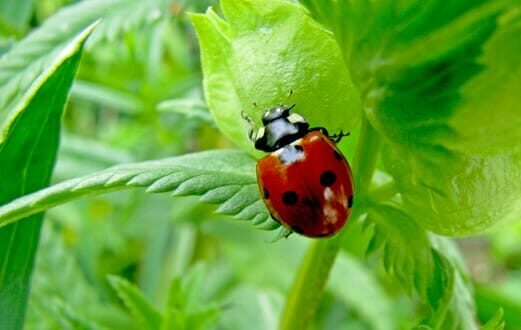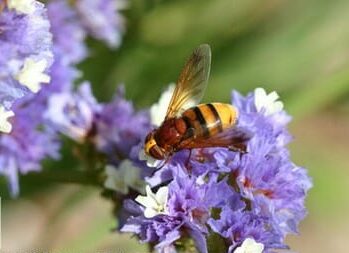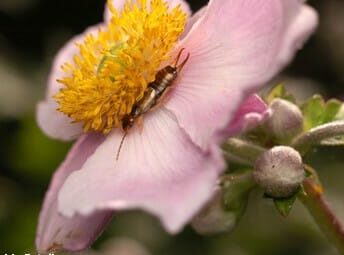
Insects in the vegetable garden, it’s quite a story! There are those that we especially do not want to see on crops as they cause so much damage, such as aphids, flea beetles, Colorado potato beetles…. And then there are those that we would gladly like to have more of them because they precisely devour the first, and are thus precious helpers in the vegetable garden. To attract them, it’s simple, offer them lodging by introducing, for example, flowering plants or suitable shelters intended to accommodate them. They will then find a few aphids to eat on their own. These five auxiliaries that I present to you are among the dearest to the gardener…
Syrphe

A big fly disguised as a wasp, the hoverfly is the hovering champion. It colonizes in search of food the umbelliferae introduced into the vegetable garden.
The young larvae, with nocturnal habits, are formidable aphid eaters . These small maggots, with their impressive voracity, no longer know where to turn in the middle of the colonies of aphids.
The Golden-Eyed Lacewing
Magnificent all summer long in its green outfit and delicately ribbed wings, the golden-eyed lacewing finds winter refuge in little-used buildings or ruined constructions. As soon as the fine weather returns, it lays eggs near colonies of aphids, the larvae of which feast, just like the adults who also decorate their meals with nectar.
The golden beetle
Just as magnificent as the lacewing, if the golden beetle reveals a charming green livery with metallic reflections, it is nonetheless a formidable predator. Active during the day, it roams the vegetable garden in search of slugs, snails, worms and other insects which it devours. It is also very useful in helping to fight the beetles that it pursues in the potato beds. The golden beetle thus helps to reduce or balance the populations of many pests. Its larva finds refuge in the winter in the compost.
The Ladybug (seven points)
The most famous of the gardener’s auxiliaries, the so-called “beast to God”, enjoys an important sympathy capital thanks to its bright colors, the amusing design of its dots on the back and its rounded shapes. . Its larva, much less aesthetic, also delights with avidity in quantities of aphids per day even if, as an adult, the ladybug is a little less fond of them. Demanding, the beast to God likes environments of dry meadows with tall vegetation, and avoids short lawns and vegetable gardens that are too clean on them. To attract it, it is therefore necessary to keep a wild flowering wasteland, made up of grasses and flowers that will serve as its refuge. As for his pantry, it’s a safe bet that he will find everything in the vegetable garden!
The earwig or earwig (earwig)

A valuable helper, the forficule also enjoys aphids in the vegetable garden. To best accommodate it, you can install a few terracotta pots filled with finely cut branches and retained by a wire mesh. This shelter can then be hung from a tall guardian or a nearby tree trunk. The eardrum will thus find lodging and cover at will.
Be careful, earwigs can sometimes be undesirable in flower beds, when they bite into the petals of dahlias, clematis or even gladioli .
